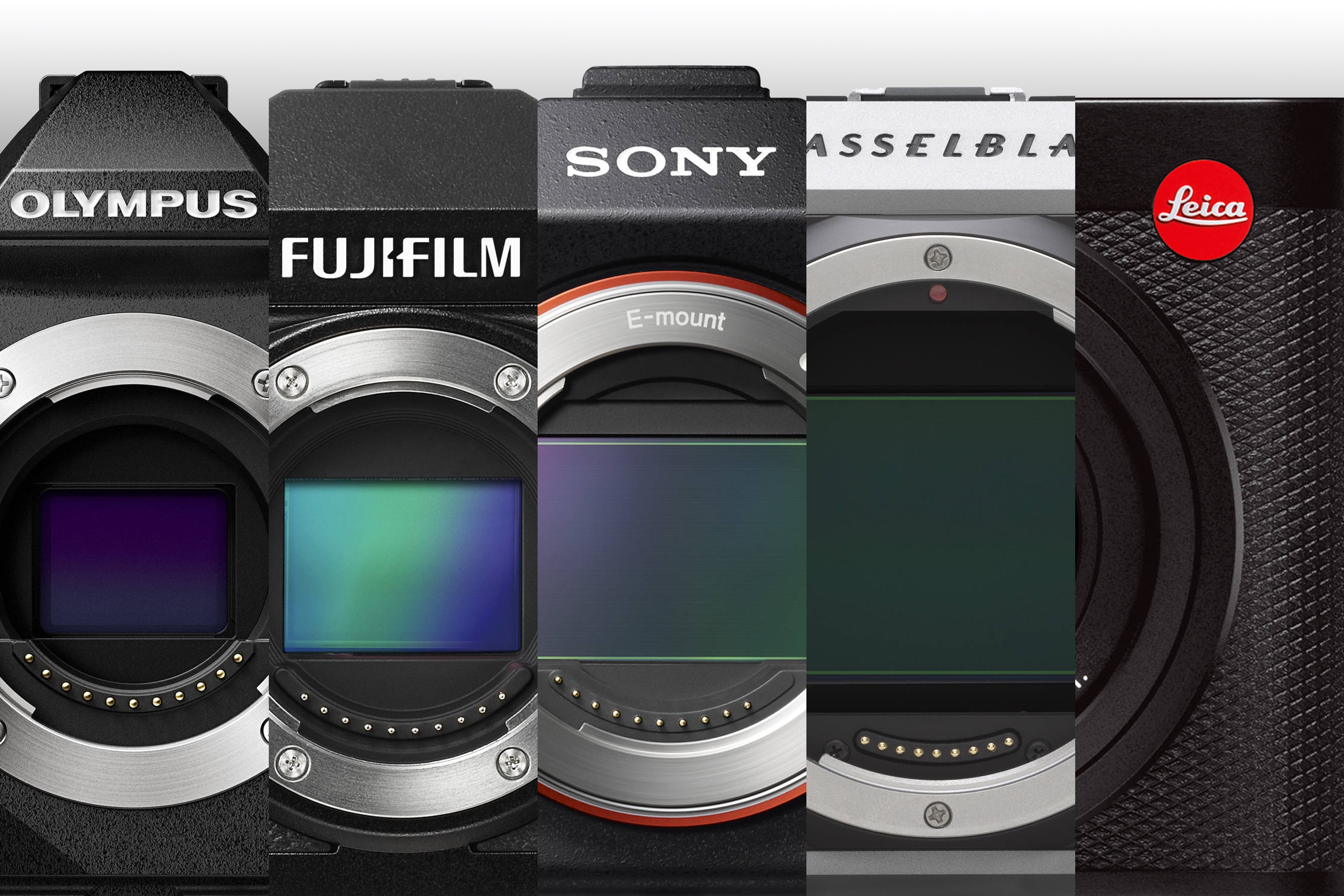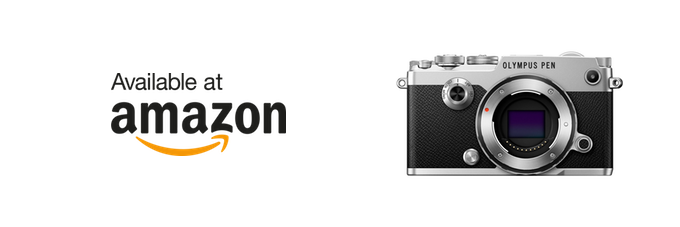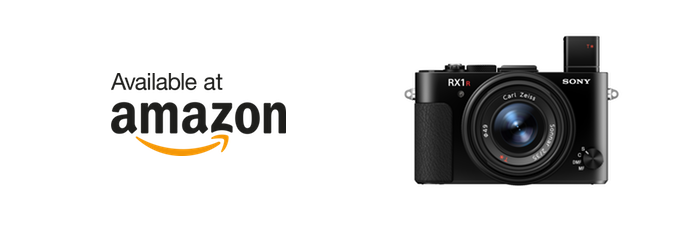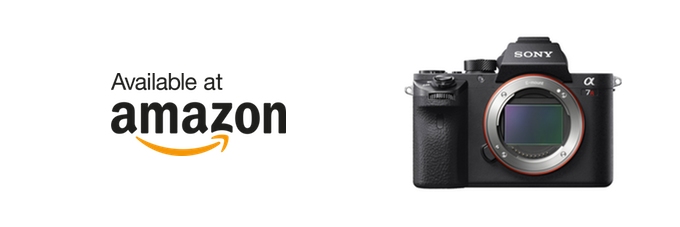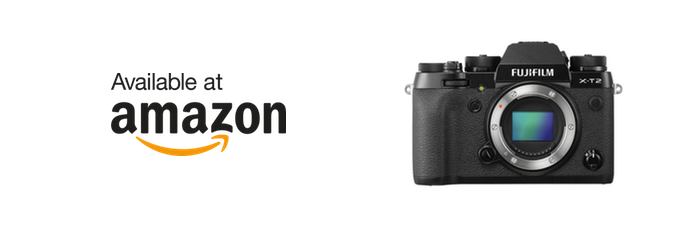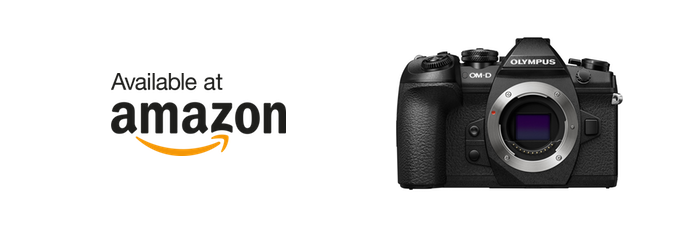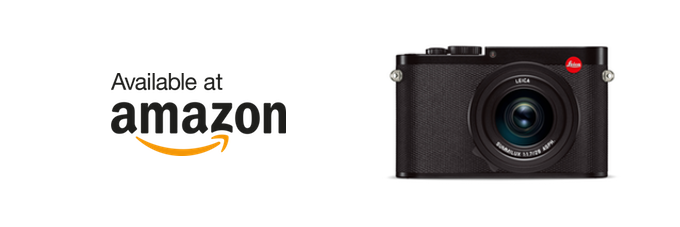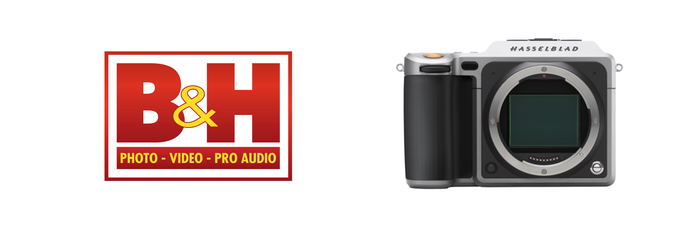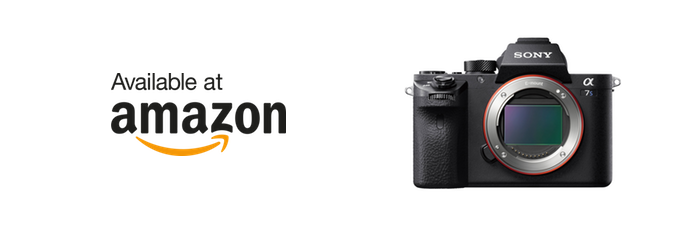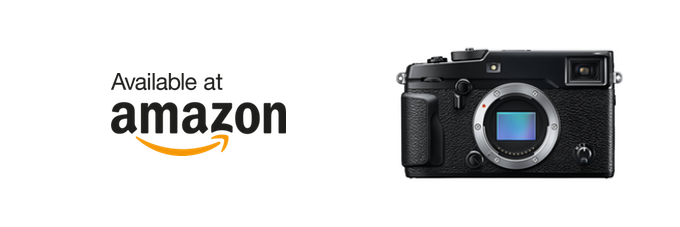Despite some people’s complaints about lack of innovation in the industry, 2016 has been a very good year for photographers. Nearly all manufacturers announced one or more new cameras over the past 12 months, including several new flagship models across different systems, and the current landscape offers many excellent choices for pretty much every type of photographer out there.
Now, it’s true that most of the recent announcements have been more evolutionary than revolutionary, but that’s not necessarily a bad thing. Mirrorless technology has come remarkably far in just a few years, and the rising tide of technology is now making previously high-end features standard across different systems.
Features like touchscreens, IBIS and dual SD card slots are now available in many cameras, and the situation is only going to get better in the future. On top of that, as manufacturers continue to push high-ISO performance and dynamic range, sensor size is becoming less of a critical factor for those looking for solid image quality in a wide variety of scenarios.
With those aspects in mind, I’ve created this guide to help you figure out which camera is the right one to get depending on your particular needs. I’m also giving out the first Editor’s Choice award in the history of Analog Senses to the best camera of 2016, and the one I recommend for most people. To learn which camera took home this most prestigious award, just keep reading!

Table of contents
Due to the length of this guide, here’s a table of contents. Click/tap on each link to go to the corresponding section.
Editor’s Choice: The Best Camera of 2016
♢
Criteria for inclusion
This guide takes a look at the camera landscape as of December 2016, but cameras released in prior years are also eligible.
Also, while most modern cameras are also able to pull double duty as surprisingly competent video cameras, this guide focuses only on the photography side of things. The reason for that is that I’m admittedly not a videographer myself, so instead of trying to come up with some reasons to recommend a camera I’ve never even used, I’d rather just be honest and encourage you to find a more informed opinion elsewhere.
As for technology, this guide focuses exclusively on mirrorless cameras. I’m well aware that DSLRs are still very much relevant, but I remain convinced mirrorless is the future of photography and the best purchasing option for the vast majority of people. If you really need a DSLR these days, chances are you already know why, and which one. And if you think you need one but can’t clearly articulate why, then you probably don’t.
Then there’s the matter of what constitutes “the best” in any given category. For me, the best camera is the one that offers the most compelling set of features when it comes to usability, speed, ruggedness, lens selection, and image quality. It’s all about technical excellence here, and pushing the industry forward. More personal factors like character or whether a certain camera inspires the user to shoot more are not accounted for here. That’s what the Editor’s Choice award is for.
Finally, price is a secondary factor as far as this guide is concerned, which means that if you’re on a strict budget, there will probably be cheaper cameras out there that may be better suited to you personally. If you want the best, though, here’s where you’ll find it.
♤
Categories
Whenever someone asks me “what’s the best camera right now?”, my response is always the same: “depends on what you want to do with it.”
You see, there’s not a camera that is universally the best for every person, or every situation. A camera that excels at being small and light may not be awesome for low light photography, and a camera that is excellent in a studio may not be the ideal travel companion. Photography is usually a game of tradeoffs.
To sort things out a bit, I’ve created several categories in this guide, and selected what I consider to be the best camera for each one. Hopefully this will be more useful than a meaningless blanket recommendation of any one camera.
Let’s get started.
When it comes to traveling, the requirements are simple: a great travel camera needs to provide solid image quality in a small and light package. On top of that, having a great selection of high-quality lenses that still fit in a small bag and don’t weigh a ton is a huge bonus. The Olympus PEN-F checks all of those boxes, and then some.
The PEN-F is inspired by Olympus’ classic PEN F line of half-frame 35mm film cameras1, which goes back to the early 1960s. In the modern era, Olympus’ digital PEN cameras are somewhat of a hybrid between their SLR-styled, professional-oriented OM-D line and their consumer cameras.
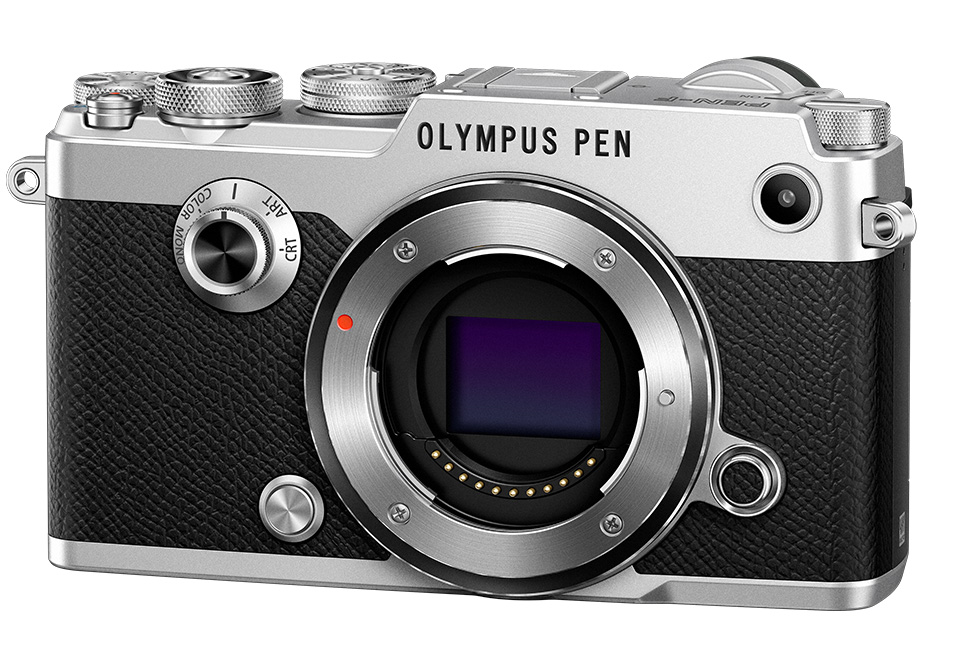
It may look cute and simple, but the PEN-F packs some serious punch in terms of technology and image quality. With a 20-Megapixel Micro Four Thirds (MFT) sensor, 5-axis IBIS and a build quality that rivals the best cameras out there, the PEN-F is certainly no slouch. Only the lack of weather sealing keeps it from being the perfect travel camera in my book.2
Of course, a big part of the PEN-F’s appeal for travel is the exceptional collection of lenses available for the MFT system. With the new Olympus 12-100mm F4 PRO zoom, for example, you can easily build a fantastic “one camera + one lens” travel kit. Add to that the new Olympus 25mm f/1.2 PRO prime, and you’ve got yourself a two-lens kit capable of magic.
Honorable mention: the Sony RX1R Mark II
If you don’t want to bother with interchangeable lenses and just want to go as light as possible without compromising on image quality, you’ll be hard-pressed to find a better travel camera than the Sony RX1R Mark II.
This technological marvel from Sony packs a superb 42-Megapixel Full Frame sensor, a fantastic EVF, and a top-class 35mm F/2 Zeiss lens into an impossibly small and light body. It also happens to have a pretty good AF system and a very handy macro mode for taking close-up shots.
On the minus side, the RX1R II is not weather sealed3, and battery life is pretty bad, so you’ll want to make sure you always carry a few spare batteries with you. This is a bit of an annoyance, but it’s not a deal breaker by any means, considering the performance you get from the camera.
The beauty of having a 42-Megapixel sensor in such a tiny camera body is that you have a lot of leeway for cropping your images, meaning you can mimic the field of view of longer lenses without any noticeable loss of image quality. In a way, it’s like having two or three lenses in one. Indeed, the RX1R II gives you two additional crop modes out of the box: 50mm and 70mm. This makes it a lot easier to live with the RX1R II as your only camera when traveling.
Alas, the other big problem with the RX1R II is price: at nearly $4,000, this is not an affordable camera by any means. That being said, if you have the money, this is one you’ll never regret buying.
Landscape photography is often associated with travel, but the requirements are actually slightly different. Size and weight, while important, take a backseat to image quality here. Resolution and dynamic range are essential when it comes to capturing landscape images, and having a comprehensive line of high-quality wide angle lenses to choose from is important as well. Finally, weather sealing is also a much-welcome feature.
The Sony a7R Mark II fulfills these requirements with ease. Its 42-Megapixel Full Frame sensor gives you all the detail and dynamic range you could want, and the 5-axis IBIS helps a lot when you want to leave the tripod behind. And since it’s dust and moisture resistant, using it in rough weather is not a problem either.
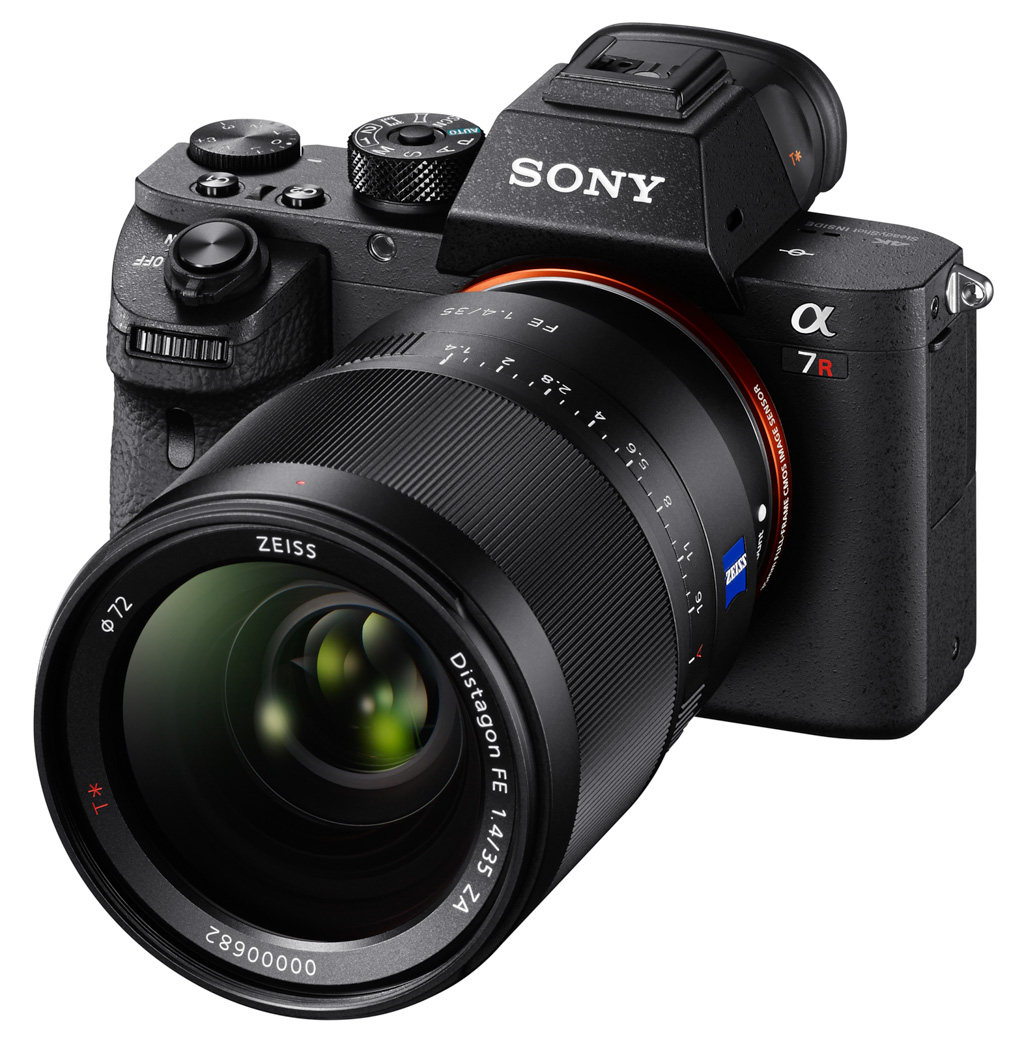
Best of all, though, are the lenses. The Zeiss 18mm F/2.8 and 25mm F/2 Batis lenses are incredibly sharp corner-to-corner and provide all the features of modern glass, as well as the signature Zeiss color and contrast. If you like to focus manually, there’s also the fantastic Zeiss 21mm f/2.8 Loxia. As for zoom lenses, the Sony Zeiss FE 16-35mm F/4 is a solid performer, and I expect a higher-end F/2.8 G-Master version to be announced in 2017.
Overall, the a7R II is a fantastic landscape camera and as such, it more than earns a place in this guide. Fair bit of warning, though: this camera is getting a bit long in the tooth by Sony’s standards, and I expect to see an updated version at some point in early 2017. If you need a great landscape camera today, this is as good as it gets, but if you can wait, my advice would be to hold off on your purchase until we see what 2017 brings.
Honorable mention: the Fuji X-T2
If the a7R II isn’t quite within your budget, you’ll be glad to know that the Fuji X-T2 is also a splendid landscape camera. The resolution bump to 24 Megapixels is much welcome, and the improved dynamic range and high-ISO performance of its X-Trans III sensor make it perfect for capturing even the most intricate details.
On top of that, Fuji has a rich lineup of wide-angle primes and zoom lenses, nearly all of which offer best-in-class image quality. The 14mm F/2.8 and 16mm F/1.4 lenses are both awesome, and the 10-24mm F/4 and 16-55mm F/2.8 are just as good as the primes optically, but offer the added convenience of a zoom.
Best of all, the Fuji X-T2 comes in at roughly half the cost of the a7R II, making it a very attractive proposition indeed.
Mirrorless cameras have traditionally lagged behind DSLRs when it comes to continuous autofocus performance, particularly subject tracking. DSLRs have dedicated phase-detection autofocus sensors that make tracking fast and accurate, but this technology was not available in mirrorless cameras until recently. Now, we’re finally starting to see on-sensor phase-detect AF systems that are fast enough to accurately track motion in all but the most demanding scenarios.4
With that in mind, the best mirrorless camera for action and sports is a very close call between the Fuji X-T2 and the Sony a6500, but ultimately the Fuji comes out on top.
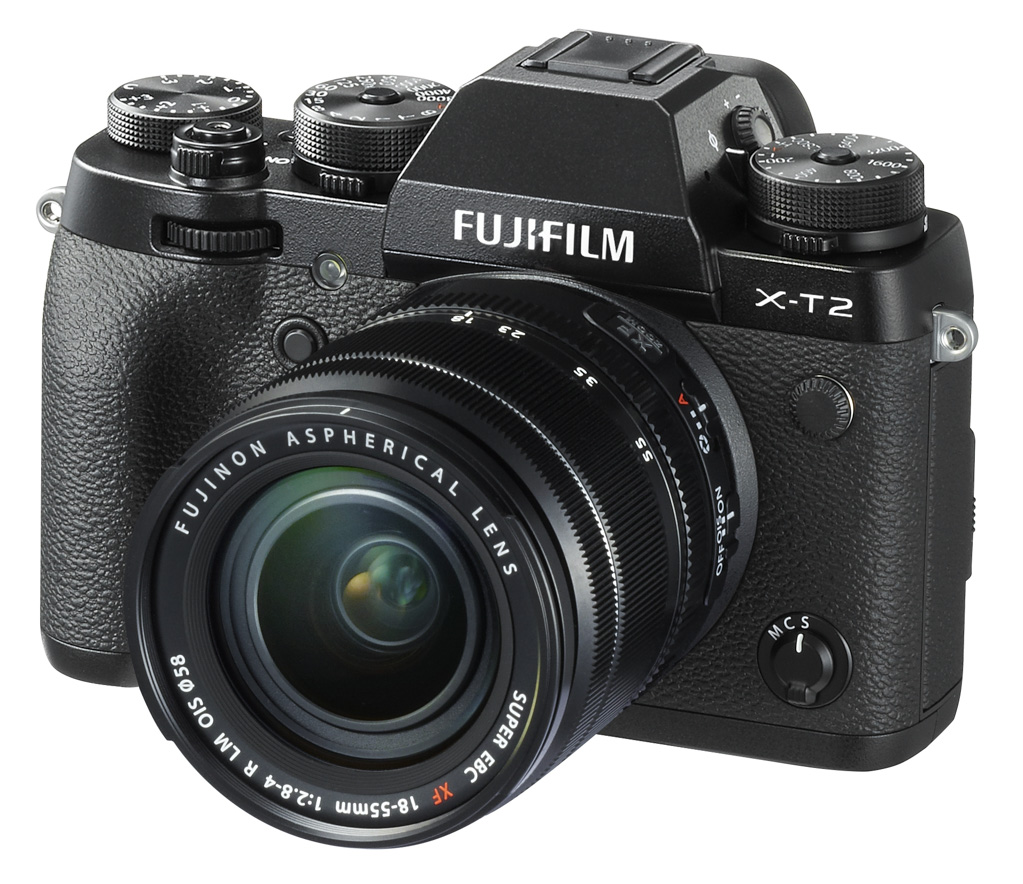
Both cameras have class-leading AF systems, with the Sony offering more AF points, but the Fuji being more customizable. Discerning users will quickly learn to choose the appropriate AF mode for the Fuji in order to get consistently great results, while the Sony always feels like playing the lottery: sometimes it will work flawlessly, and others it will fail miserably. Having the option to configure the AF system’s behavior goes a long way towards getting the results you want, and that’s where the Fuji outperforms the Sony.
The a6500 does have a couple cool features that are missing from the X-T2, though. First up is the much-awaited touchscreen that allows you to select the focus point by simply touching the screen. This is a great feature but unfortunately it seems to be very slow and unresponsive, which makes it inadequate for fast action and sports shooting. Then there’s a Live View mode that nearly eliminates EVF blackout times during bursts and helps you keep your subject in the frame while panning, for example.
On the other hand, the Fuji X-T2 has dual SD-card slots, which is a must-have in a high-end camera these days and a strange omission in the a6500. The Fuji X-T2 also has a joystick to move the AF point around. Many people prefer the immediacy of dedicated physical controls over a touchscreen, so that’s up to you. Of course, the ideal solution would have been to include both, but for some reason Fuji opted not to build a touchscreen into the X-T2.
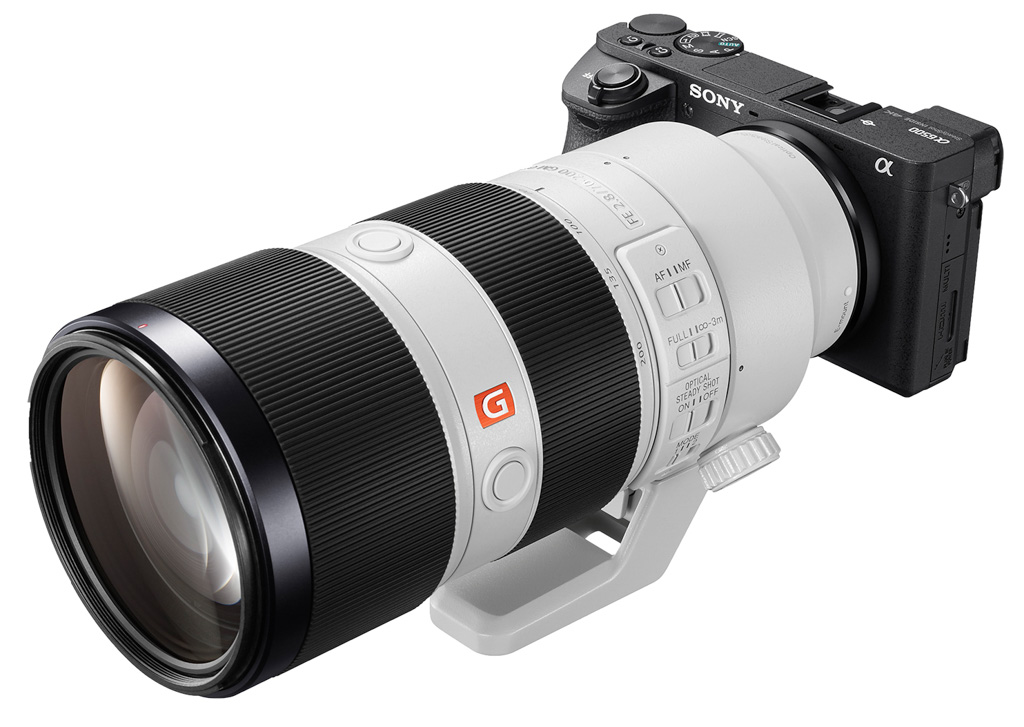
The lack of high-quality native APS-C lenses for the Sony a6500 means you’re stuck using bigger and more expensive Full Frame lenses with it, which is not ideal.
Clearly both cameras will be able to produce superb results once you figure out their respective quirks, but what ultimately gave the Fuji the win is the lens selection. While Fuji offers a fantastic lineup of fast zoom lenses that are great for action and sports, Sony has been neglecting their APS-C lineup for years. If you want to go with the a6500, your best bet is to use Full Frame lenses with it, which means you’ll be stuck carrying bigger, heavier, and way more expensive lenses that, to add insult to injury, will not even be as sharp on the a6500 as native APS-C lenses in most cases.
Using native APS-C lenses on APS-C bodies is almost always the better choice, and Fuji’s ecosystem is literally years ahead of Sony’s. So while both camera bodies are excellent, at the end of the day the Fuji X-T2 is the better buy.5
Honorable mention: the Olympus OM-D E-M1 Mark II
Another very good camera to buy for sports shooting is the Olympus OM-D E-M1 Mark II. This is a speed demon in every way, with a burst rate of up to 15 fps with full AF capabilities, or an insane 60 fps with focus locked to the first frame. Add to that a fantastic EVF and a solid, weather-sealed body and you get a pretty serious camera for the action-minded photographer.
Another strong point the E-M1 II has going for it is the lenses. The Olympus PRO zoom lenses are among the very best the industry has to offer: they’re super durable, weather-sealed, and have longer reach than comparable APS-C or Full Frame lenses. The 40-150mm F/2.8 PRO zoom, for example, gets you all the way to a 300mm-equivalent field of view with a fast aperture and in a lens that is still fairly small and light. That’s impressive.
On the minus side, the E-M1 II still lags behind APS-C and Full Frame in terms of image quality. The new 20-Megapixel sensor is a welcome improvement but provides less cropping ability than its bigger-sensor competitors. Dynamic range and high-ISO performance are also a step behind what APS-C and Full Frame offer, a factor that comes into play when shooting in poorly lit arenas or stadiums. At the end of the day, you can’t cheat Physics.
Considering the image quality gap that exists, and considering that the E-M1 II is actually more expensive than either the Fuji X-T2 or the Sony a6500, there’s just not enough upside here to recommend it over the others for action shooting. It’s still a fantastic camera and easily a top pick for other uses such as wildlife photography, but this particular one belongs to the bigger guys.
A great wildlife camera needs to fulfill a few very important requirements, most of which the Olympus OM-D E-M1 Mark II checks neatly.
First of all, it needs to be weather sealed. That’s non-negotiable. A lot can happen while you’re out there in the wilderness, waiting to capture the perfect shot of an elusive animal, so your camera needs to be able to handle pretty much anything Mother Nature throws at you. The E-M1 II is easily the toughest mirrorless camera yet, and one of the toughest cameras, period. It is splash-proof, dust-proof and freeze-proof, and so are the Olympus PRO lenses. Whatever the weather, if you’re tough enough to be out there in it, so is the E-M1 II.
Then there’s the matter of reach. It’s not always feasible or advisable to get up close and personal with certain animals, so you’ll want to have an outstanding telephoto lens in your arsenal. The Olympus PRO 300mm F/4 prime lens gives you a 600mm-equivalent field of view in a lens that’s still small enough to carry anywhere. And with Olympus’ superb IBIS technology and the lens’ own image stabilization working together, you can easily capture tack-sharp photos handheld.
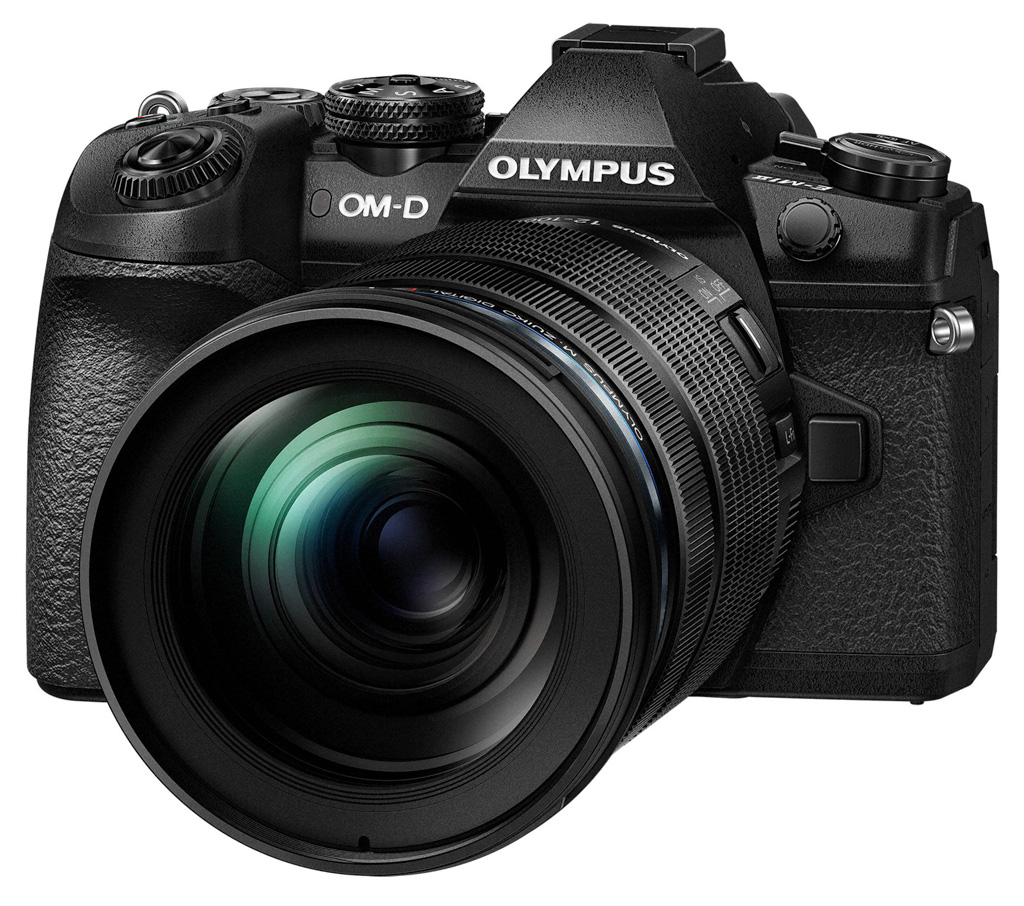
Another important factor is speed. In wildlife photography you don’t usually get a second chance to capture the perfect shot — after all, wild animals are notoriously bad at following posing directions. This is where having a quick and accurate AF system, fast burst rate, and generous buffer depth matters most, and the E-M1 II is an industry leader in all of those things. With 121 cross-type hybrid AF points, a 15 fps burst rate with full AF capabilities, and a buffer that just keeps going forever, you won’t need a second chance to capture the next iconic National Geographic cover.
Size and weight are also important for wildlife photography. The beauty of the MFT system is that you can carry a complete professional setup in a relatively small bag, something that is even more important when traveling. Carting a massive pile of equipment around the African jungle is no fun, and with the E-M1 II, you won’t have to.
Overall, the E-M1 II is a great wildlife camera, but there’s a catch: many wildlife photographs are taken at night, or in places where light is scarce. In such cases, image stabilization is of no help because you want to maintain a sufficiently fast shutter speed in order to avoid motion blur in your subjects. Your only choice there is to raise your ISO value, and that’s where the E-M1 II struggles. Unfortunately, the smaller size of the MFT sensor means low light performance isn’t as good as APS-C or Full Frame, and there’s no way around it.
If you intend to do a majority of your wildlife shooting in good lighting conditions, the E-M1 II is a solid choice, and the best overall camera in this category. However, if you plan on spending much time shooting in dimly lit places, you may want to take a look at the honorable mention below, or even the Low Light pick further down in this guide.
Honorable mention: the Fuji X-T2
The Fuji X-T2 is almost as good as the E-M1 II in most situations, and even slightly better in some cases.
It’s weather-sealed, but not to the same extent. It has excellent long lenses, like the 100-400mm F/4.5-5-6, but they’re slower. It has a very good burst rate — 11 fps mechanical, 14 fps electronic — and a reasonably deep buffer, but both of those are slightly worse than the E-M1 II’s. It’s also a significantly bigger and heavier system once you start adding multiple lenses.
However, thanks to its bigger APS-C sensor, it’s also better than the E-M1 II in low light, which could make a big difference for night-time photographers. Whether that’s enough to tip the scales in its favor is entirely up to you. Of course, other cameras are even better than the X-T2 for low light photography, but if you go with one of those you’ll be stuck carrying even bigger and heavier lenses, and by then you start getting diminishing results. Wildlife photography is all about striking the right balance, and there’s a very good case to be made for the X-T2 here.
In fact, in a world where the E-M1 II didn’t exist, the Fuji X-T2 would have easily taken this category, and I would still recommend it over the Olympus for people who shoot primarily in poor lighting conditions, and those whose needs are not limited to wildlife photography. Basically, the more stuff you do with your camera, the more I would encourage you to pick up the X-T2 instead. The E-M1 II may be better at wildlife photography, but the X-T2 is better at nearly everything else.
Street photography is another one of those areas with very specific requirements. Because the goal is usually to capture candid scenes as they unfold, a good street camera should be as small and inconspicuous as possible. People usually become self-conscious when being pointed at with a huge lens by a random stranger, which can lead to some awkward interactions, or worse. Now, street photography is of course a lot more than that, but you have to start somewhere.
My advice if you’re getting into street photography is to choose one focal length and stick to it. Zoom lenses may be convenient for general use, but in my experience they make you compositionally lazy. A fast prime lens will give you better image quality and the ability to keep your shutter speed fast enough to freeze movement even as light becomes dimmer.
As for which focal length is the best, this is a subject of much debate among photographers. Many people believe that 50mm is the most natural focal length, but I’m a big fan of the 35mm field of view. It is just wide enough to capture a bit more of the environment in your shots, but it’s not so wide that it distorts your subjects. Another interesting aspect of the 35mm focal length is that it will force you to step closer to your subject, which will go a long way towards making you more comfortable with the craft of street photography.
With those requirements in mind, the best camera for street photography right now is the Sony RX1R Mark II.
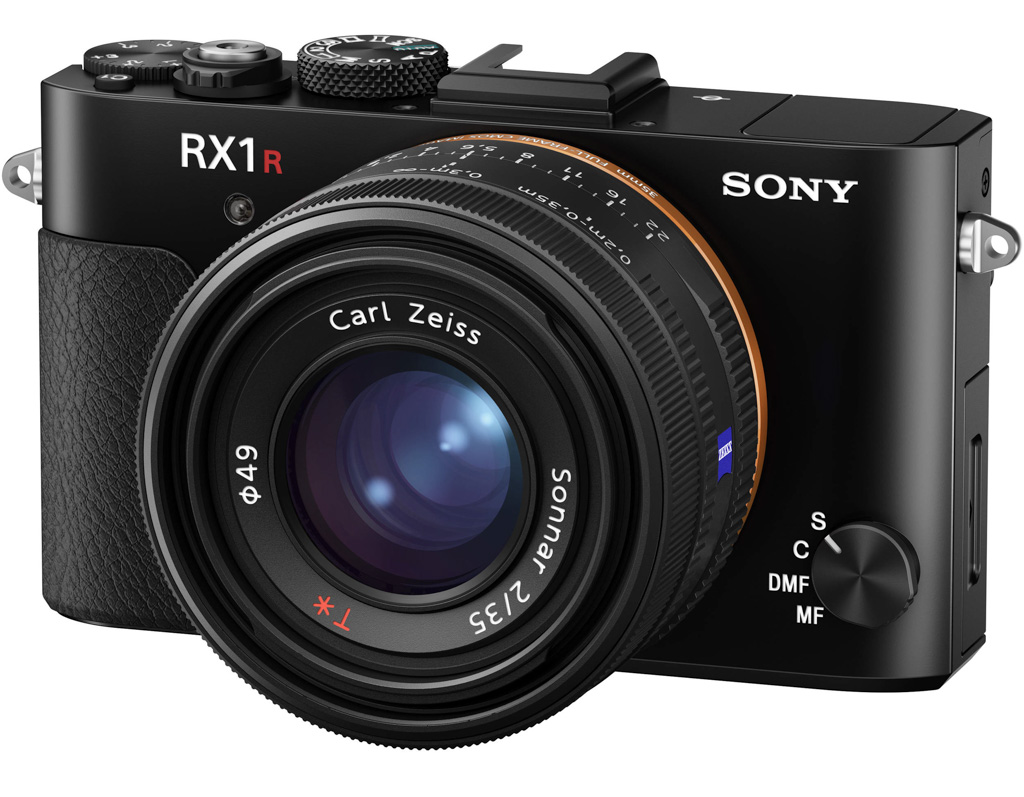
This camera is so small and light that it’s hard to believe it has a 42-Megapixel Full Frame sensor inside. It also has a gorgeous 35mm F/2 Zeiss lens built into the body, which is just about perfect for street photography. And since you’ve got resolution to spare, you can easily crop your images to a 50mm field of view without any noticeable loss of quality.
The RX1R II also has a great retractable EVF and a much-improved AF system, making it a very compelling fixed-lens camera overall. The only downsides are battery life and price: at nearly $4,000, this is clearly not your average consumer camera. Those issues aside, if you’re into the “one camera, one lens” philosophy, it doesn’t get any better than this.
Honorable mention: the Leica Q
The Leica Q is a very interesting animal, and quite possibly the polar opposite of the Sony RX1R II.
Both are extremely high-end fixed-lens cameras and both are very good, but where the Sony goes for ultimate customizability and technical excellence, the Leica is all about removing cruft and focusing on the essentials.
Build quality-wise, the Leica Q is certainly a step above the Sony. It feels remarkably solid and dense, in a way that is very reassuring. Its EVF is superb, and the software menu is well thought-out. Nobody makes cameras like Leica, so this is hardly a surprise. It’s also a very user-friendly camera, and the shooting experience is about as intuitive as it gets. The Sony, on the other hand, can be a bit overwhelming with a seemingly infinite amount of menu items and customizable options.
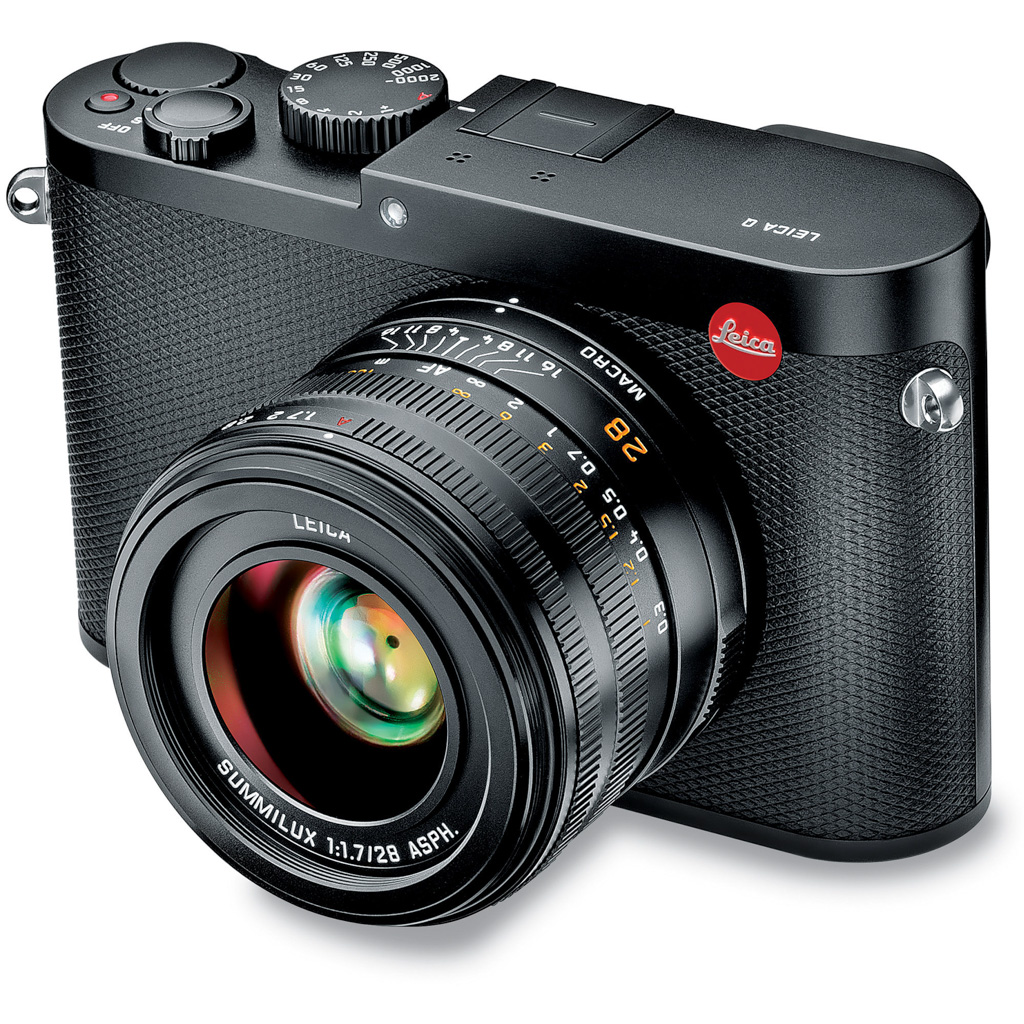
Where the Leica simply can’t keep up with the Sony is in raw specs: resolution is only 24 Megapixels, as opposed to 42. This limits the amount of cropping you can do with the Leica, while the Sony is a lot more versatile.
As for focal lengths, the Leica Q has a 28mm F/1.7 lens, so it’s a bit wider than the Sony. The Leica gives you the choice to crop to both 35mm and 50mm fields of view in-camera, but this is where the lack of resolution hurts it. Had Leica built a higher resolution sensor into the Q, it would have been a much closer call between these two. As things stand, though, the Sony takes the win easily, especially considering the Leica Q is actually the more expensive of the two.
Still, if you value simplicity and focus in product design, the Leica Q remains a truly fascinating camera well worth your consideration.
Portrait and studio photography are all about image quality, so it’s no surprise the Sony a7R Mark II takes this category.
With a 42-megapixel Full Frame sensor that delivers industry-leading image quality, high-ISO performance and dynamic range, the Sony a7R II is one hell of a camera. It also has some cool advanced AF features like Eye-AF, which is a great asset for portrait photography.
On top of that, Sony’s recent push to release more high-end Full Frame lenses is already paying off, with the E-mount offering a truly comprehensive range of professional-grade glass.

The new G-Master lenses, for example, are all best-in-class and provide all the image quality a photographer could ever need. Now there’s a full trinity of F/1.4 primes, and Sony also has a 90mm F/2.8 macro lens that is so sharp existing resolution benchmarks can’t measure it accurately. On top of that, Zeiss is also doing wonderful things with the Batis and Loxia lines of lenses, with every new release becoming an instant hit. As far as portrait and studio photographers are concerned, all that’s missing now in the system is a fast 135mm prime lens, and I would be very surprised if such a lens didn’t see the light of day in 2017.
Fair bit of warning, though: the Sony a7R II is getting a bit long in the tooth by Sony’s standards, and I expect to see an updated version at some point in early 2017. If you need a great portrait/studio camera today, this is as good as it gets, but if you can wait, my advice would be to hold off on your purchase until we see what 2017 brings.
Honorable mention: the Hasselblad X1D
This one’s a bit of a head-scratcher. The trend in the industry seems to suggest sensor size is becoming less relevant as high-ISO performance and dynamic range get better, and yet Hasselblad just released the first mirrorless Medium Format camera in 2016, and Fujifilm will follow suit in 2017. Go figure.
The likely explanation for that is that high-end studio photography is still all about huge sensors and insane resolutions. Behemoths like the Phase Ones of the world exist for a reason, and it’s nice to see companies innovating in that space with mirrorless technology.
With the X1D, Hasselblad managed to fit a 50-Megapixel Medium Format sensor into a mirrorless body that is considerably smaller than a Full Frame DSLR, which is an impressive technological achievement. Resolution is certainly enough for most applications, although considering the Full Frame Canon 5DS R has had a 50-Megapixel sensor for a while, it isn’t exactly Earth-shattering.
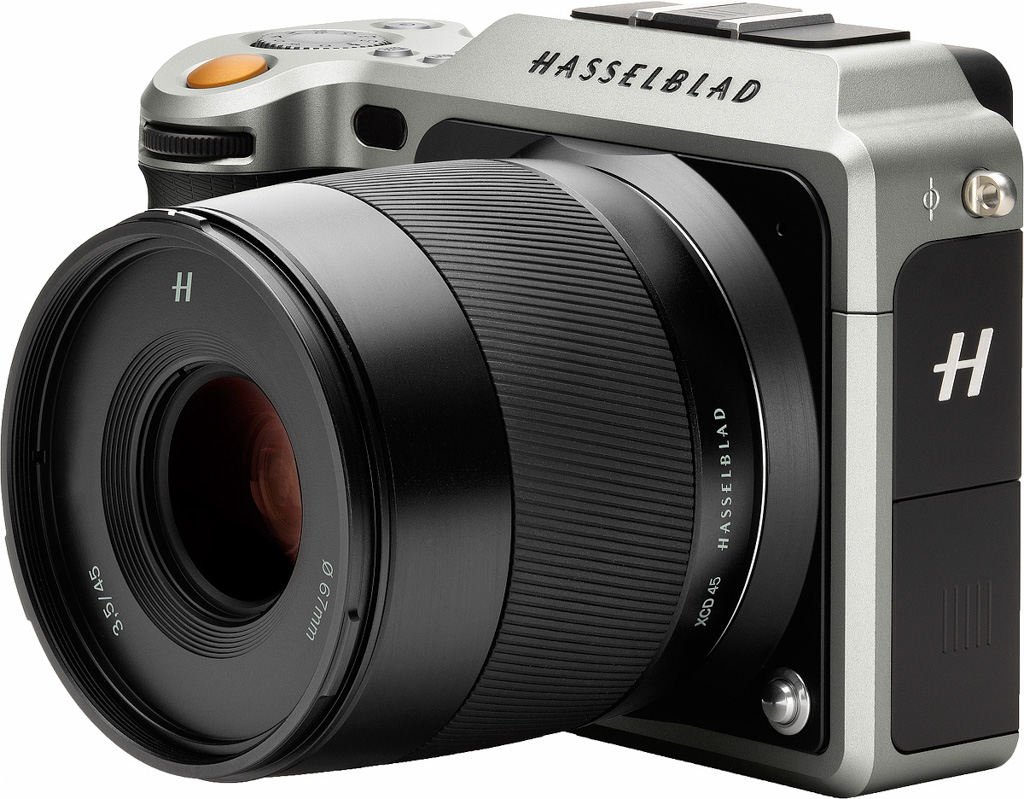
Now, the Hasselblad X1D is technically a Medium Format camera because it has a sensor that’s larger than Full Frame but the truth is that, at 44 x 33 mm, it’s still very much on the small side of Medium Format. This means the image quality gains over Full Frame, while significant, will not be overwhelming.
As for lens selection, the X1D is compatible with the existing range of Hasselblad lenses for the H System, albeit with the use of an adapter. As of 2016, the native lens selection is limited to only three lenses, which makes the Hasselblad X1D a bit of a mystery and keeps it from seriously challenging the a7R II as this category’s winner. Things may change in 2017 if Hasselblad releases more lenses for the X1D or if the upcoming Fujifilm GFX takes the world by storm but for now, it is what it is.
When it comes to low light performance, there are three critical factors at play: sensor size, ISO performance, and image stabilization.
Sensor size is important because the larger the sensor, the more total light is captured by the camera. Pictures are basically light paintings so the more light you get, the cleaner your images will be. Bottom point: for the purposes of low light shooting, a larger sensor equals better.
ISO performance refers to the amount of detail, noise and color fidelity captured in an image at any given ISO setting. As sensor technology gets better, performance at high ISO values also improves. This in turn raises the maximum ISO value at which we can shoot while still getting usable images, allowing us to shoot in darker environments, or use faster shutter speeds to freeze movement, or narrower apertures to increase depth of field, even in dim conditions.
Finally, if you shoot handheld, image stabilization is also important because it allows you to use a slower shutter speed and/or a narrower aperture with a low ISO value while still getting sharp images. Image stabilization can’t compensate for moving subjects, though, it only compensates for camera shake.
With that in mind, the best camera for low light shooting is the Sony a7S Mark II.
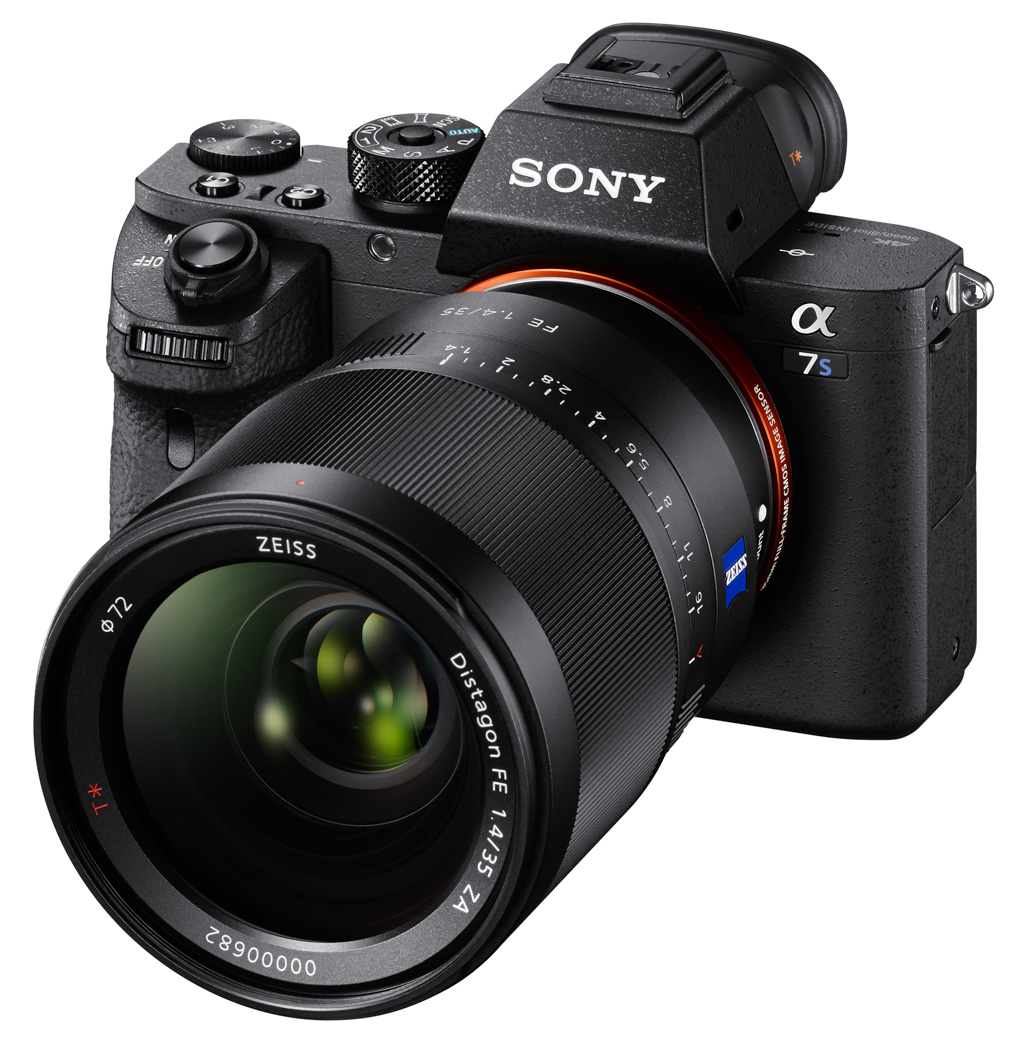
While most modern cameras have a maximum usable ISO of 6,400 or thereabouts, you can still get perfectly usable images with the Sony a7S II at ISO 25,600 or even higher, depending on your tolerance for noise. This sort of high-ISO performance is just ridiculous, and miles ahead every other camera out there.
Between that, the 12.9-Megapixel Full Frame sensor and the 5-axis IBIS, the Sony a7S II can actually see in the dark, and is the uncontested winner in this category.
Honorable mention: the Sony a7S (original)
The original Sony a7S, announced in April 2014, was the first camera to offer such an impressive high-ISO performance, and continues to be a very good alternative today. All that’s missing here when compared to the newer a7S II is the 5-axis IBIS and the slightly more advanced AF system. That may be important to some people, but if you shoot primarily with a tripod — think astrophotography, for example — then it’s a non-issue.
If that’s your case, you’d be much better served by going with the original a7S instead, and putting the rest of the money towards a nice lens.
♧
There you have it. Throughout this guide I’ve laid out the best cameras the industry has to offer in each respective category. Hopefully you found something useful here.
However, while technology is certainly important, photography is first and foremost a creative discipline, and a craft. It’s nice to have the biggest sensor or the sharpest lenses, but when it comes to making a smart purchasing decision there are other factors that should be considered as well.
These factors can’t be measured by charts, or quantified by specs. I’m talking about character, and user experience. I’m talking about design. I’m talking about how a camera makes you feel, and whether shooting with it is an enjoyable process rather than a chore.
In order to account for these factors, I’ve decided to give out the first Editor’s Choice award in the history of Analog Senses to the best camera of 2016. And so, while there are cameras with arguably better specs out there, or cameras that are more expensive, the one I recommend for most people is the Fuji X-T2.
As you’ve seen above, there’s no shortage of excellent cameras in the industry these days. However, for all that technical excellence, character is becoming increasingly harder to find.
Luckily, there are still manufacturers like Fuji that remain committed to a philosophy that doesn’t sacrifice character in favor of specs. At the end of the day, what we instinctively perceive as character isn’t limited to the way a camera looks or feels; it is something a lot more profound. To quote Steve Jobs, “design is not just what it looks like and feels like. Design is how it works.”
Fuji cameras are different, and the X-T2 is no exception. You can tell by details such as the perfect placement of dials and buttons, and the dedicated aperture rings on most lenses. The Fuji X-Series system is designed by photographers, for photographers, and it shows.

Using the X-T2 is a two-hands operation, as it should be. Once you get used to this workflow, it’s easy to notice the benefits: every essential parameter — including aperture, shutter speed, and ISO — is available right at your fingertips via dedicated hardware controls. Simple. Of course, you can still set everything to Auto and fire away without a care in the world, but if you’ve made it this far into this guide, something tells me you care a bit more about photography.
I’m admittedly a Sony shooter myself, but every day I’m tempted by the Fuji system, and the X-T2 in particular. In my time testing it, I quickly noticed that having all those dedicated controls made me want to shoot in manual mode all the time. If I were to own this camera I would definitely try and get used to that, not only because it would make me a better photographer by informing my understanding of light metering and the exposure triangle, but because it is just plain fun.
Then there’s the matter of Fuji’s gorgeous film emulations, including the new Acros. These manage to replicate the feel of some of Fuji’s iconic film stocks with a modern twist, and the results are fantastic. It’s easy to overlook this feature as gimmicky, but being able to share images that look finished straight out of camera is a huge benefit in many situations.

That being said, the Fuji X-T2 is not only about character; it is a technological marvel in its own right. It has a class-leading 24-Megapixel X-Trans III sensor and a state-of-the-art AF system. It also has a rugged, weather-sealed body, dual SD-card slots, and a top-shelf EVF. In terms of specs and features, it is very much a modern camera, but it’s also so much more than that.
The Fuji X-T2 is unique because it manages to marry the technical chops needed to succeed in the cutthroat market of 2016 with the intangible character Fuji has always instilled into their cameras. That’s no small feat, and it’s what makes the X-T2 stand out from the pack.
If you appreciate good design and love the craft of photography, you simply can’t buy a better camera these days.
Honorable mention: the Fuji X-Pro 2
Fuji’s X-Pro series of cameras is arguably even more special than the X-T series. Where the X-T2 manages to strike a near perfect balance between specs and character, the X-Pro 2 deliberately skews that balance in favor of character. This is a camera that won’t leave anyone indifferent.
The X-Pro 2 shares many of the features of the X-T2, to the point where both cameras are considered co-flagships of the X-Series system by Fuji. Both have the same 24-Megapixel X-Trans III sensor, weather sealing, dual SD-card slots, dedicated controls, image processor, film emulations, and more. The main differences between the two cameras are the overall aesthetic, the AF modes, the rear LCD screen, and the viewfinder.
The X-T2 goes for a standard SLR-like look, including a viewfinder hump. It also has an electronic viewfinder and a tilting LCD screen, like most mirrorless cameras these days. The X-Pro 2, on the other hand, is rangefinder-style camera and has a fixed LCD screen and a hybrid viewfinder — optical and electronic — that makes shooting with it an entirely different experience.
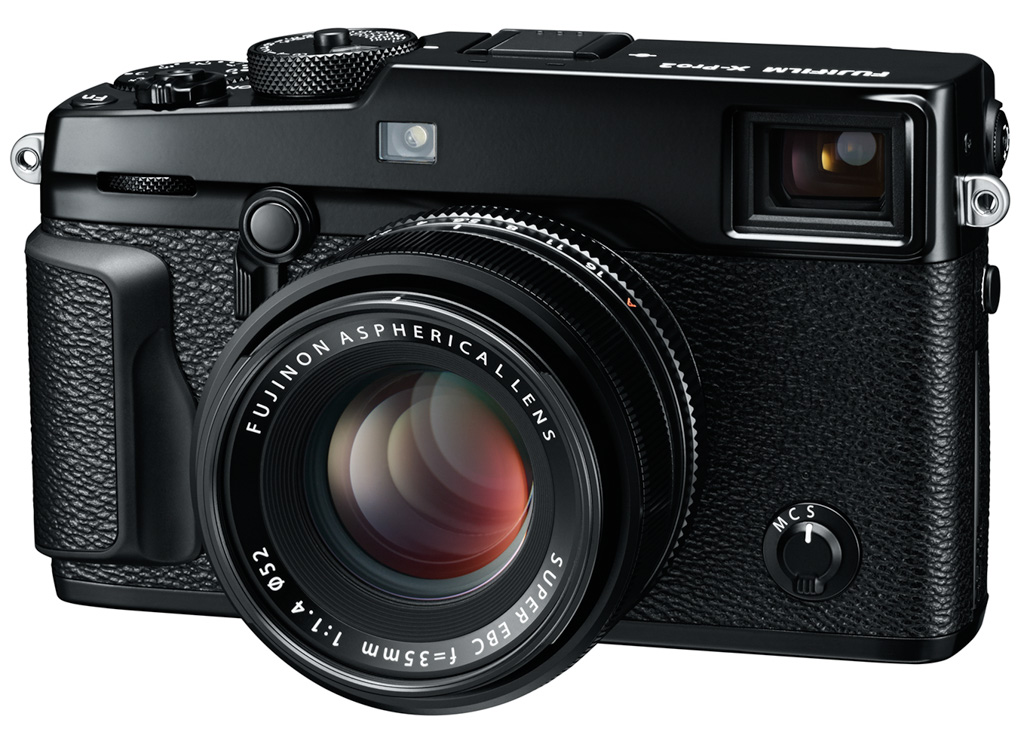
People who love classic rangefinder cameras will fall head over heels for the X-Pro 2. It really is a super fun camera to shoot with. If you’re coming from an SLR-like camera, shooting with a rangefinder takes some getting used to, but it’s actually very simple. The main advantage is that you’re always seeing the entire scene, not just the part of it that is captured by the field of view of your lens. This allows you to anticipate subject movement and compose your shots a lot more easily.
Another neat feature in the X-Pro 2 is that you can instantly switch from the optical viewfinder to the electronic one by flipping a lever on the front of the camera, meaning you’ll always be able to use the one that works best for any given situation. Smart.
The only real downsides of the X-Pro 2 when compared to its more mainstream sibling are the lack of a tilting LCD screen and the slightly less advanced AF system. The X-Pro 2 has a very competent AF system, but it lacks the customizable modes for subject tracking of the X-T2. Now, since both cameras share the same image processor, I fully expect this feature to be added to the X-Pro 2 in a future firmware update but for now, it is what it is.
Given the relatively minor technological differences between the X-Pro 2 and the X-T2, choosing between them is mostly a matter of personal preference. Go with the X-T2 if you like SLR-style cameras, you shoot fast-moving subjects, or you want to have a tilting LCD screen. Also, go with the X-T2 if you’re hesitating between the two; it’s just a safer option that will most likely please everybody.
That being said, if your shooting style is more deliberate, and you don’t mind putting in the time and effort it takes to master the rangefinder, there’s plenty to love about the X-Pro 2. It’s just a more interesting camera, and one that may make you fall in love with the craft of photography all over again.
♡
Final Words
2016 has been a great year for mirrorless photography. We’re now at a point where every system offers one or more cameras that can stand their ground against comparably-specced DSLRs, and in some cases handily outperform them. With every new release, the list of reasons to buy a DSLR keeps getting shorter.
Image quality has never been this good, and high-ISO performance keeps improving year after year. Focusing is finally at a point where subject tracking no longer sucks, and features like dual SD-card slots, IBIS and touchscreens are making their way into more and more cameras. Some manufacturers are even rolling out professional customer service networks across the world. This is what steady evolutionary progress feels like, and it’s great.
Sure, there are still people who need a DSLR today, and many who just prefer them. For all the benefits of mirrorless technology, DSLRs are not going anywhere. They won’t become obsolete, and they won’t be phased out anytime soon. That’s not the point.
The point is that you no longer need one to take wonderful images, even if you’re a professional. The myth that mirrorless cameras are for amateurs is finally losing steam. Good riddance.
There’s never been a better time to buy a camera, and if you’re willing to take a leap of faith and leave the mirror behind for good, I promise you’ll never look back.
♢
Thank you for reading this far.6 These guides take a long time to put together, so if you found it helpful, please take a minute to share it on your preferred social media platform. Thanks!
-
Half-frame film cameras used an 18×24 mm vertical (portrait) format, producing twice the pictures on a roll of 135 film as the regular 36×24 mm format.↩
-
If you need weather sealing, the Olympus OM-D E-M5 Mark II is a good choice, but it has a lower-resolution 16-Megapixel sensor. Of course, the flagship OM-D E-M1 Mark II is also weather sealed and packs a similar 20-Megapixel sensor as the PEN-F, but it is significantly bigger and heavier, and it costs twice as much.↩
-
Unfortunately, I couldn’t find any similar high-quality, fixed-lens cameras that are weather sealed. Both the Leica Q and the Fuji X100T lack weather sealing as well.↩
-
To be fair, even the best mirrorless cameras are still a step behind what the best DSLRs can do when it comes to subject tracking, but now they are definitely usable, and the gap is closing fast.↩
-
Unless you’ve already bought into the Sony Full Frame E-mount system or plan to do so in the future. If you already own an a7-series camera and one or more lenses, it may make more sense to go with the a6500 as a dedicated action/sports body and use the same lenses with both cameras.↩
-
Icons used throughout the guide: Airplane by Pixel Buddha; Picture, Podium, Stand, and Happy by Madebyoliver; Tiger and Moon by Freepik; Gold medal by Roundicons. All from www.flaticon.com.↩
